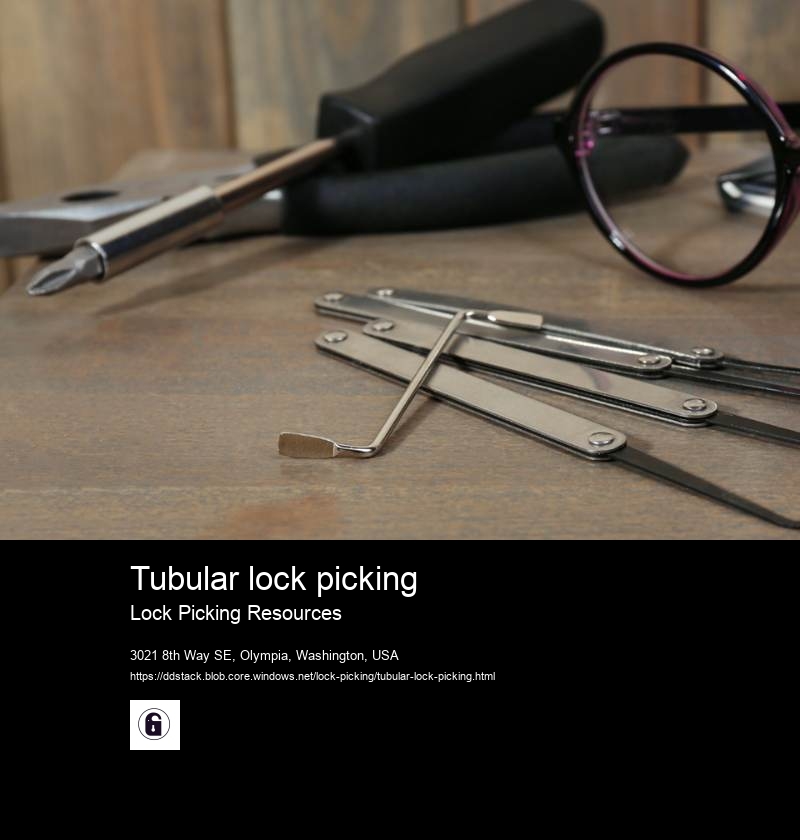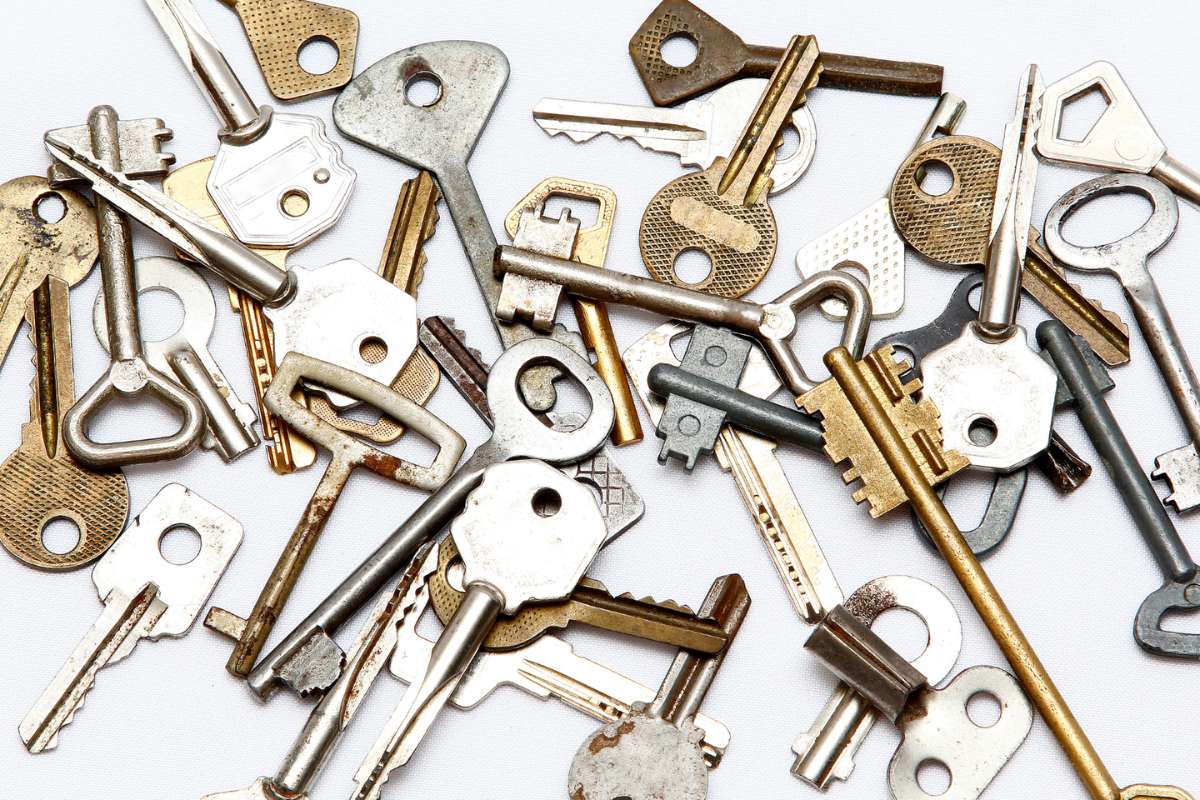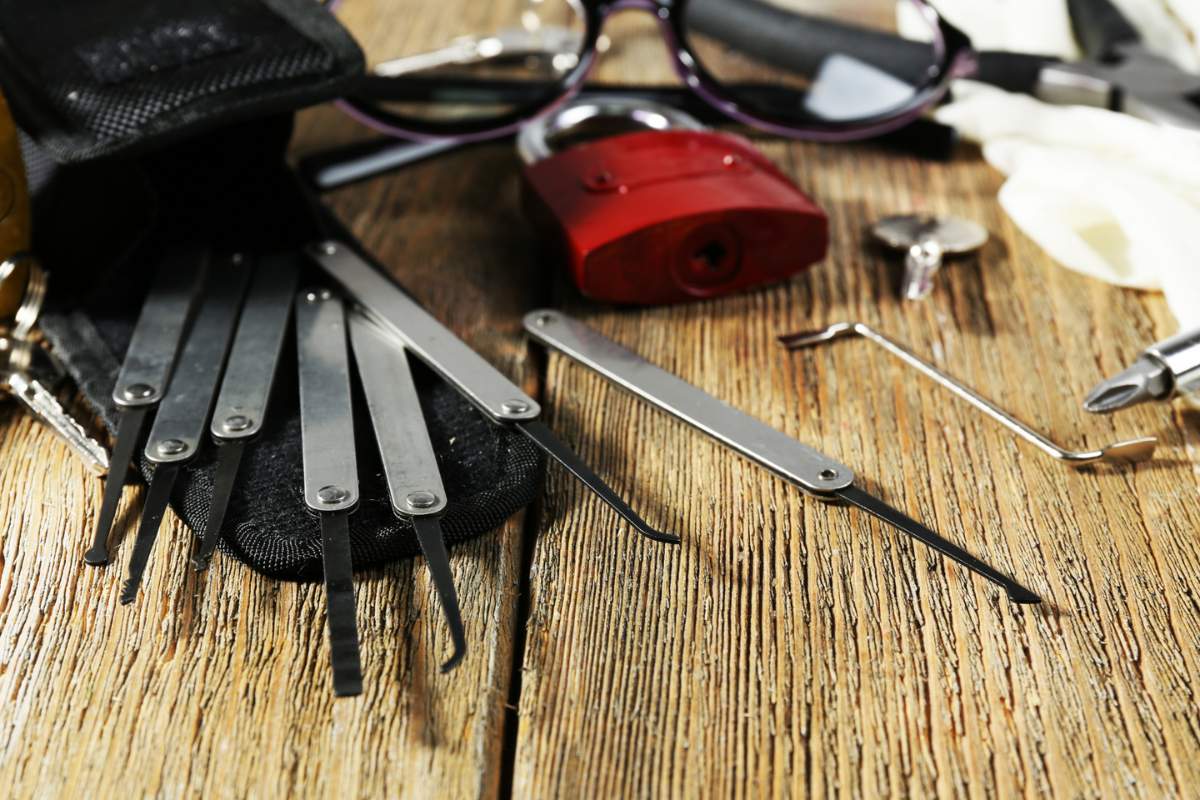Tubular lock picking
What is a mortise lock?
The purpose of a tension wrench is to create tension or torque on the lock's cylinder, holding the pins in place and allowing the lock picker to manipulate the individual pins with a pick tool. By applying the correct amount of tension to the cylinder and manipulating the pins with the pick tool, the lock can be opened without the use of a key.
Tension wrenches come in a variety of shapes and sizes to accommodate different types of locks and keyways. They can be made from a variety of materials, including stainless steel and titanium, and can be purchased individually or as part of a lock picking set.
While tension wrenches are an essential tool for lock picking, they require skill and practice to use effectively. The lock picker must apply the correct amount of tension to the cylinder and manipulate the pins in a precise and controlled manner in order to successfully open the lock.

What is a mortise lock?
A torsion wrench, also known as a tension wrench, is a tool used in lock picking. It is a thin, flat piece of metal, usually L-shaped, that is inserted into the bottom of a lock's keyway and used to apply rotational force to the lock cylinder.
The purpose of a torsion wrench is to create tension or torque on the lock's cylinder, holding the pins in place and allowing the lock picker to manipulate the individual pins with a pick tool. By applying the correct amount of tension to the cylinder and manipulating the pins with the pick tool, the lock can be opened without the use of a key.
Torsion wrenches come in a variety of shapes and sizes to accommodate different types of locks and keyways. They can be made from a variety of materials, including stainless steel and titanium, and can be purchased individually or as part of a lock picking set.
While torsion wrenches are an essential tool for lock picking, they require skill and practice to use effectively. The lock picker must apply the correct amount of tension to the cylinder and manipulate the pins in a precise and controlled manner in order to successfully open the lock.
What is a mortise lock?What is a jimmy-proof lock?
A key extractor is a tool used in lock picking to remove broken keys from a lock cylinder. When a key breaks off inside a lock, it can be very difficult to remove the broken piece without damaging the lock. This is where a key extractor comes in.
A key extractor is a thin, flat piece of metal that is inserted into the lock cylinder and used to grip the broken key fragment. The extractor is then turned, creating a rotational force that loosens the broken piece from the cylinder and allows it to be pulled out.
Key extractors come in a variety of shapes and sizes to accommodate different types of locks and keyways. They can be made from a variety of materials, including stainless steel and titanium, and can be purchased individually or as part of a lock picking set.


How does a jimmy-proof lock work?
Using a key extractor requires a certain level of skill and practice, as it is important to apply the correct amount of force and to maneuver the extractor in a precise and controlled manner to avoid damaging the lock. If used incorrectly, a key extractor can potentially damage the lock and make it even more difficult to remove the broken key fragment.
Using a key extractor to remove a broken key from a lock cylinder requires a certain level of skill and practice. Here are the general steps to follow:
Insert the extractor: Insert the tip of the key extractor into the lock cylinder, with the hook facing toward the broken key fragment.
Apply pressure: Apply a small amount of pressure to the extractor, pushing it in further and creating tension on the broken key fragment.
What is a rim lock?
Turn the extractor: Use a twisting motion to turn the extractor in the direction that the key would normally turn. This will create a rotational force that can loosen the broken key fragment from the cylinder.
Remove the fragment: Slowly pull the extractor out of the cylinder while still applying pressure and turning it. This should cause the broken key fragment to come out with the extractor.
It is important to be patient and gentle when using a key extractor, as applying too much force or turning too aggressively can potentially damage the lock or push the broken key fragment further into the cylinder. If you are having difficulty removing the key fragment, it may be best to seek the assistance of a professional locksmith.
A plug spinner is a tool used in lock picking to quickly and easily rotate a lock cylinder in the opposite direction of its normal rotation. The purpose of a plug spinner is to allow the lock to be opened without the use of a key, even if the pins inside the lock are set in a way that would normally prevent it from being opened.
How does a rim lock work?
A plug spinner typically consists of a handle and a rotating head that can be attached to the lock cylinder. The rotating head is designed to fit into the keyway and apply rotational force to the cylinder in the opposite direction of its normal rotation. This allows the lock to be opened by manipulating the pins with a lock pick tool.
Plug spinners come in a variety of shapes and sizes to accommodate different types of locks and keyways. They can be powered manually or with a battery-powered motor, and can be purchased individually or as part of a lock picking set.
While plug spinners can be a useful tool for experienced lock pickers, they do require a certain level of skill and practice to use effectively. If used incorrectly, a plug spinner can potentially damage the lock and make it even more difficult to open. As with any lock picking tool, it is important to use plug spinners responsibly and only with the owner's permission.
Using a plug spinner to open a lock requires a certain level of skill and practice, as it is important to apply the tool correctly to avoid damaging the lock. Here are the general steps to follow:
What is a cam lock?
Choose the right tool: Select a plug spinner that is appropriate for the type of lock you are trying to open. Make sure it fits snugly into the keyway and is securely attached to the lock cylinder.
Apply rotational force: Apply rotational force to the lock cylinder in the opposite direction of its normal rotation. This can be done manually by turning the plug spinner handle, or with a battery-powered motor.
Apply tension: Use a tension wrench or torsion wrench to apply tension to the lock cylinder in the direction of its normal rotation. This will create a gap between the pins inside the lock and allow them to be manipulated with a lock pick tool.
Manipulate the pins: Use a lock pick tool, such as a hook pick or diamond pick, to manipulate the pins inside the lock cylinder. The goal is to set each pin to the correct height so that the lock can be opened.
